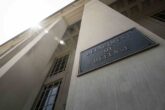March 10, 2025
America’s Eroding Airpower
For more than 80 years, a cornerstone of the United States’ military strength has been its unparalleled ability to project power through the air. Washington has the most sophisticated fleet of combat aircraft in the world. Because these planes can be refueled by the country’s many tankers, they have global reach. From domestic bases, stealthy bombers can fly through heavily defended airspace unmolested and destroy multiple targets in one mission. American short-range fighter aircraft can drop bombs and take out enemy planes and surface-to-air missiles.
But the U.S. fleet is shrinking, and its airpower advantage appears to be eroding. Rivals such as China and Russia have invested in air defenses that deny the United States superiority over the skies and force it to rely on expensive standoff missile strikes—that is, attacks launched far enough away to be beyond the reach of enemy defenses. China, the United States’ main rival, unveiled two new stealth aircraft designs in December, demonstrating surprising progress in its fighter technology. Other adversaries have produced large numbers of cheap drones and missiles that allow for low-cost airstrikes.
To have a chance at success, the United States would need more low-end drones and missiles that can provide it with mass.
The effects of inexpensive drones are evident in today’s conflicts. In Ukraine, both Kyiv and Moscow try to overwhelm the other’s air defenses by bombarding them with disposable drones. Traditional planes have stayed in safer airspace behind the frontlines, while cheaper uncrewed systems strike deep into enemy territory. In the Middle East, Iran and its proxies have used drones and missiles to launch standoff attacks against Israel, commercial shipping, and U.S. forces. Although these attacks have not caused widespread damage, they are expensive to interdict. Cumulatively, the U.S. Navy has spent more than $1 billion on munitions to stop them, far more than the attacks cost. The United States, for example, has been firing AIM-120 Advanced Medium-Range Air-to-Air Missiles—worth more than $1 million each—to shoot down Iranian-made drones that cost $50,000.
From these conflicts, the Pentagon appears to have learned that it needs to invest more in cheap drones. In August 2023, it launched the Replicator Initiative, which aims to field thousands of expendable autonomous systems within two years to counter China’s growing military. In 2024, the U.S. Air Force awarded initial contracts for another program designed to produce a thousand advanced drones that fly alongside crewed fighter jets. But this bet on cheap drones seems to be coming at the expense of high-end planes. The navy and air force have delayed their next-generation fighter programs, and the Trump administration is likely to continue this pause. Meanwhile, U.S. Secretary of Defense Pete Hegseth has exempted drones from his planned budget cuts.
Read the full article on Foreign Affairs.
More from CNAS
-
Defense / Transatlantic Security
When Defense Becomes Destruction: Austria-Hungary’s Mistake and Ukraine’s RiskThis article was originally posted on War on the Rocks. The southeastern Polish city of Przemyśl, with its elegant 19th century Habsburg-era train station, remains one of the ...
By Franz-Stefan Gady
-
Defense / Transatlantic Security
Ukraine’s Catch-22 MomentThis article was originally published in the Financial Times. In Joseph Heller’s wartime classic, Catch-22, the protagonist Yossarian seeks out the US army surgeon Doc Daneeka...
By Franz-Stefan Gady
-
CNAS Insights | Budgetary Own Goals Undermine “Speed and Volume”
On November 7, Secretary of Defense Pete Hegseth laid out a plan to overhaul the Department of Defense’s (DOD’s) acquisition system. Placing an emphasis on delivering new capa...
By Philip Sheers, Carlton Haelig & Stacie Pettyjohn
-
Drones: Who Is Making the New Weapons of War?
From Ukraine and Russia to Gaza and Sudan, drones have become a key weapon of war. Which companies are making them, and profiting from this rapidly expanding but controversial...
By Stacie Pettyjohn




